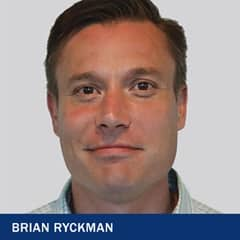What is Considered Plagiarism And How to Avoid It

Students often encounter the term plagiarism as part of their school or university’s academic honesty policy. The word might also be referenced in a course syllabus, or perhaps be covered by an instructor or librarian during a class session.
Plagiarism is usually couched in strong language about the seriousness of the offense. To plagiarize, as defined by the "Merriam-Webster Dictionary,” means “to steal and pass off (the ideas or words of another) as one’s own” and “to commit literary theft” by failing to acknowledge or cite source material.
Stealing, cheating, duplicating, misattributing, copying and pasting, poorly paraphrasing, sloppily summarizing, committing fraud — plagiarism by any other name is still plagiarism, right? But what’s considered plagiarism is often more nuanced, especially with the surrounding issues of ownership, context, and the legitimacy of information.

“Citing helps to strengthen one’s argument by referring to previous research and ideas from experts and industry,” said Brian Ryckman, a former librarian and current adjunct instructor at Southern New Hampshire University (SNHU).
As an e-librarian at SNHU, Ryckman worked with students on a daily basis to address concerns about researching, using and citing information. The majority of questions he received were about how to cite sources correctly, followed by when to cite. Below are answers to such questions as well as other things you should know about the topic, including some ways to avoid plagiarism.
Types of Plagiarism
The Plagiarism Spectrum is a continuum of 10 common types of plagiarism compiled by Turnitin, a company that provides tools to ensure originality for educators. Some of the major types include:
- Copying or submitting someone else's work – From copying-and-pasting to buying term papers online, this is one of the most frequent and most serious types of plagiarism, according to Turnitin's worldwide survey. Turnitin noted several ways that someone's work can be copied, including directly copying or making various edits to copied segments.
- Improper citation – This form of plagiarism can take various forms, such as not using quotation marks correctly, paraphrasing multiple sources by cobbling them together and citing non-existent sources or inaccurate information from your sources.
- Self-plagiarism – Contrary to what many students believe, it is possible to plagiarize yourself, according to Turnitin. For example, borrowing "generously from (your own) previous work without citation," or turning in a paper for one class that you wrote for another.
Intent to cheat and extent of plagiarism are important factors when it comes to assessing the severity of a plagiarism case, according to Tracey Bretag in a "PLOS Medicine" article titled “Challenges in Addressing Plagiarism in Education.” Intention is especially important when evaluating cases of accidental plagiarism, which can result from poor note taking, not quoting or citing properly, or paraphrasing incorrectly.
What Qualifies as Plagiarism?
SNHU's Academic Integrity Policy defines plagiarism: "The use, whether by paraphrase or direct quotation, of the published or unpublished work of another without full and clear acknowledgment through proper citation."
Facts serve an essential role in research papers or projects, but real learning is more than simply memorizing or replicating facts. Students should understand the material, demonstrate that understanding, and contribute their original thoughts, comparisons or interpretations.
Knowledge does not exist in a vacuum, which is why learning how to cite your sources and influences constitutes a basic life skill. “Understanding what has been written about in one’s field helps to move conversations forward and not rehash the same ideas over and over," Ryckman said.
In other words, not giving credit where it is due is a way of taking credit, and thus, of plagiarizing. Avoiding plagiarism requires students to engage deeply with ideas, research and readings; synthesize learned material with original thinking and analysis; and properly cite others’ work as they build on and contribute to existing knowledge on topics.
There’s a world (wide web) of information out there. For instructors, teachers, librarians, professors and other educators, the challenge is teaching people to parse and use that information in ways that are ethical and responsible.

The rise in artificial intelligence (AI) over the past few years has added some confusion to the definition of plagiarism for some. According to an article by Turnitin, using AI to write an assignment for you may not be technically considered plagiarism in the traditional sense if the generated work is completely original, but submitting this work as your own is still a form of cheating or academic dishonesty. The article compared submitting AI generated writing as your own to "contract cheating" — paying someone else to do your assignments for you.
 BethMarie Gooding, director of information literacy of SNHU's Shapiro Library and a librarian with over 18 years of experience, referred to this as "AI plagiarism."
BethMarie Gooding, director of information literacy of SNHU's Shapiro Library and a librarian with over 18 years of experience, referred to this as "AI plagiarism."
"Use of generative artificial intelligence raises concerns about 'AI plagiarism' or the use of generative AI to create content that a student submits as their own work," Gooding said. "Our learners need to be diligent in creating their own work and properly attributing any outside resources used in projects, research papers or assignments."
All types of research included in your writing should be cited, but some information doesn't require attribution.
What is Excluded From Plagiarism?
Students are often told that general or common knowledge does not require citation. When it comes to what is common knowledge in respect to plagiarism, this includes facts that are widely known to the public, ones that are not the results of original or unique research. Such facts are available from numerous (credible) sources and are not protected by copyright laws. Common knowledge examples include the following:
- Two-thirds of the Earth’s surface is covered by water.
- Citrus fruits are a good source of vitamin C.
- Mars is the fourth planet from the sun in our solar system.
- Columbus set sail across the Atlantic Ocean in 1492.
- Leonardo da Vinci painted La Giaconda, referred to as the Mona Lisa in English.
Context matters when it comes to common knowledge. "I think we can all agree, for example, that bats are nocturnal mammals. But if we were to say bats are nocturnal mammals whose population has been decimated by White-Nose Syndrome, then we want to cite the source from which we learned that the bat population has been affected. Not only does including the source strengthen our argument, it also gives the reader an opportunity to learn more,” Ryckman said.
Can Plagiarism Be Illegal?
In a majority of situations, Gooding said plagiarism is generally not illegal. "Rather, it is most often a violation of ethics codes or academic integrity and can result in disciplinary action from an individual’s educational institution or workplace," she said.
Although it isn't usually illegal, Gooding noted that there are instances wherein plagiarism could, in fact, lead to legal trouble. "Plagiarism can warrant legal action if it encroaches on the original author’s copyright, patent or trademark and can result in a lawsuit if a contract for original work is broken," she said.
Even if you aren't likely to run into trouble with the law, plagiarism is still an ethical breech that can lead to institutional punishment. For writers and academics especially, Gooding noted that plagiarism can also hugely damage your reputation.
How to Avoid Plagiarism
![]() Technology makes plagiarizing (accidentally or on purpose) a real possibility, but it also makes catching plagiarism easier. A quick Google search by a moderately tech-savvy teacher or professor can reveal plagiarized content. But an ounce of prevention is worth a pound of cure. Students, researchers and instructors alike can use online plagiarism checkers and detection software (available for free or a fee) as learning tools to help ensure the originality and integrity of their writing and research.
Technology makes plagiarizing (accidentally or on purpose) a real possibility, but it also makes catching plagiarism easier. A quick Google search by a moderately tech-savvy teacher or professor can reveal plagiarized content. But an ounce of prevention is worth a pound of cure. Students, researchers and instructors alike can use online plagiarism checkers and detection software (available for free or a fee) as learning tools to help ensure the originality and integrity of their writing and research.
While such tools are useful, instructors and librarians are students’ greatest allies in the fight against plagiarism. These professionals are embracing technology to help teach fundamental digital and information literacy skills, including finding, assessing and integrating sources (including images) while citing and attributing them appropriately.
"To avoid plagiarism, an individual should always properly attribute any information they use to the original author through quotes, citations both in the body of the paper or assignment and on a reference page," Gooding said.
She also emphasized the importance of including citations when you're paraphrasing a source. "Many students mistakenly omit what are called 'in-text' citations," she said. "They provide brief details that reference the original source of a quote or paraphrase within the body of a paper."
At SNHU, there are several avenues for students to get help finding and citing sources, according to Ryckman. He recommended reaching out to the Writing Center, Online Writing Center, or faculty. "All of which are resources to help students navigate, interpret, and cite sources,” he said. He said the library can also be a great resource for research.
Finally, students should take advantage of the numerous educational resources available for free online, such as plagiarism.org, which defines plagiarism and explains ways to avoid it while giving examples. Other websites, such as dictionary.com, provide citations in several formats, allowing you to easily include them in a document’s bibliography.
Ryckman recommends students and faculty review the Association of College and Research Libraries' framework for information literacy in higher education for exploring research as inquiry and scholarship as conversation.
While plagiarism is not illegal, the consequences vary by institutional or organizational policy, from a failing grade to a damaged reputation. So when in doubt about whether or not to attribute a quote or source, just remember — more often than not, cite makes right.
A degree can change your life. Choose your program from 200+ SNHU degrees that can take you where you want to go.
Rebecca LeBoeuf Blanchette '18 '22G is a writer at Southern New Hampshire University, where she fulfills her love of learning daily through conversations with professionals across a range of fields. She earned her Bachelor of Arts in Communication with a minor in Professional Writing from SNHU’s campus in Manchester, New Hampshire, and followed her love of storytelling into the online Master of Arts in English and Creative Writing at SNHU. Connect with her on LinkedIn.
Explore more content like this article

Major vs. Minor vs. Concentration: What’s the Difference?

College vs. University: What’s the Difference?

Is Getting a Second Bachelor’s Degree Worth It?
About Southern New Hampshire University

SNHU is a nonprofit, accredited university with a mission to make high-quality education more accessible and affordable for everyone.
Founded in 1932, and online since 1995, we’ve helped countless students reach their goals with flexible, career-focused programs. Our 300-acre campus in Manchester, NH is home to over 3,000 students, and we serve over 135,000 students online. Visit our about SNHU page to learn more about our mission, accreditations, leadership team, national recognitions and awards.


